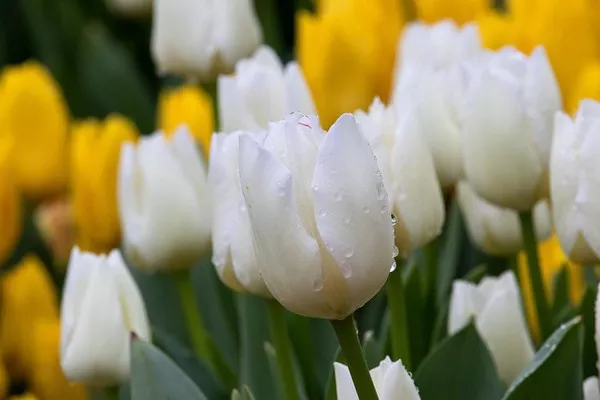Flowers have long been recognized as messengers of human emotions, carrying sentiments and meanings beyond their aesthetic beauty. Among the myriad of emotions they symbolize, admiration stands out as a profound expression of esteem, respect, and reverence. In this comprehensive exploration, we delve into the rich symbolism of flowers associated with admiration, tracing their cultural significance, historical roots, and contemporary relevance.
Understanding Admiration: A Universal Human Experience
Admiration, defined as a feeling of respect and approval towards someone or something, transcends cultural and linguistic boundaries. It is a universal human experience, intricately woven into the fabric of interpersonal relationships, societal values, and artistic expressions. Whether it’s admiration for a mentor’s wisdom, a friend’s courage, or the beauty of nature, this profound emotion fuels inspiration, fosters connection, and enriches human experience.
Flowers as Messengers of Admiration: A Historical Perspective
The tradition of using flowers to convey admiration traces back to ancient civilizations, where floral symbolism permeated various aspects of life, from religious rituals to social customs. In classical antiquity, Greek and Roman poets extolled the virtues of flowers such as the rose, associating them with admiration, beauty, and love. The rose, with its exquisite fragrance and delicate petals, became emblematic of admiration and adoration, finding its place in countless works of art and literature.
During the Middle Ages, the language of flowers, also known as floriography, flourished as a means of covert communication, allowing individuals to express sentiments that were otherwise constrained by social norms. In Victorian England, where strict etiquette governed romantic relationships, the exchange of flowers became a subtle yet powerful way to convey admiration and affection. Each flower carried nuanced meanings, with subtle variations in color and arrangement adding layers of complexity to the message conveyed.
The Symbolism of Admiration in Flowers
While numerous flowers symbolize admiration across cultures and traditions, several stand out for their distinct associations with this profound emotion. Among them, the following flowers hold a special place in the lexicon of floral symbolism:
Rose: As perhaps the most iconic symbol of love and admiration, the rose transcends cultural boundaries and holds universal appeal. With its velvety petals and intoxicating fragrance, the rose has long been associated with admiration, devotion, and respect. Whether in shades of red, pink, or white, the rose communicates heartfelt admiration and appreciation in various contexts, from romantic gestures to expressions of gratitude.
Sunflower: With its radiant petals and towering stature, the sunflower exudes warmth, vitality, and positivity. Symbolizing adoration, loyalty, and admiration, the sunflower captivates with its sunny disposition and unwavering resilience. As a symbol of admiration, the sunflower embodies the qualities of steadfastness and unwavering support, serving as a beacon of hope and inspiration.
Tulip: Renowned for its elegant form and vibrant hues, the tulip symbolizes a range of emotions, including admiration, elegance, and grace. Originating from Persia and later popularized in the Netherlands, the tulip has captured the imagination of poets, artists, and gardeners alike. Whether in classic shades of red and yellow or rare varietals with intricate patterns, the tulip evokes admiration and appreciation for its beauty and resilience.
Orchid: With its exotic allure and intricate blooms, the orchid embodies mystery, elegance, and sophistication. Symbolizing rare beauty, admiration, and refinement, the orchid commands attention with its enchanting presence. Whether as a corsage for a special occasion or a centerpiece in a lavish bouquet, the orchid elicits admiration and reverence for its unparalleled beauty and grace.
Lily: Revered for its purity, innocence, and regal bearing, the lily holds symbolic significance across cultures and religions. As a symbol of admiration and respect, the lily conveys sentiments of admiration and appreciation for its timeless elegance and ethereal beauty. Whether in pristine white or vibrant hues, the lily inspires awe and reverence, making it a cherished emblem of admiration and adoration.
Contemporary Applications of Floral Symbolism
In today’s fast-paced world, where digital communication often supersedes traditional modes of expression, the timeless language of flowers continues to resonate as a meaningful way to convey admiration and appreciation. From bouquets delivered on special occasions to floral arrangements adorning corporate events, flowers serve as tangible expressions of admiration, gratitude, and respect.
In professional settings, the exchange of flowers can foster goodwill, strengthen relationships, and convey appreciation for colleagues, mentors, and clients. Whether as a gesture of congratulations for a job well done or a token of appreciation for years of dedicated service, flowers communicate admiration in a tangible and memorable way.
In personal relationships, the gift of flowers holds special significance, serving as a tangible expression of admiration and affection. Whether celebrating milestones such as birthdays, anniversaries, or achievements, or simply expressing gratitude for the presence of loved ones in our lives, flowers convey sentiments that words alone cannot fully capture.
Moreover, the growing popularity of floral subscription services and online florists has made it easier than ever to send flowers as a gesture of admiration and appreciation. With a few clicks, individuals can select the perfect arrangement, add a personalized message, and have it delivered to the recipient’s doorstep, creating moments of joy and connection across distances.
Conclusion
In the intricate tapestry of human emotions, admiration stands out as a powerful expression of esteem, respect, and appreciation. Through the language of flowers, this profound emotion finds timeless expression, transcending cultural boundaries and linguistic barriers.
Whether conveyed through the velvety petals of a rose, the radiant blooms of a sunflower, or the elegant form of a lily, admiration takes on myriad forms, each imbued with its own unique beauty and symbolism. As we navigate the complexities of modern life, let us not forget the enduring power of flowers to communicate admiration, gratitude, and love in ways that resonate deeply with the human spirit.


